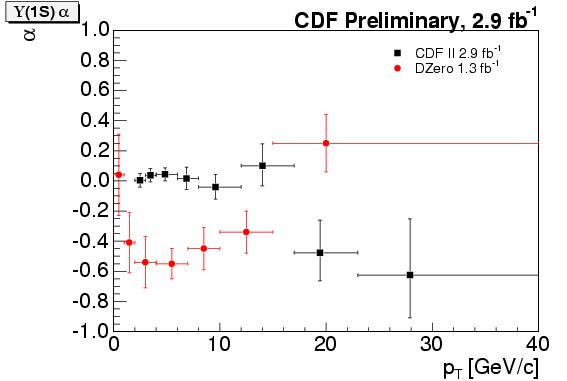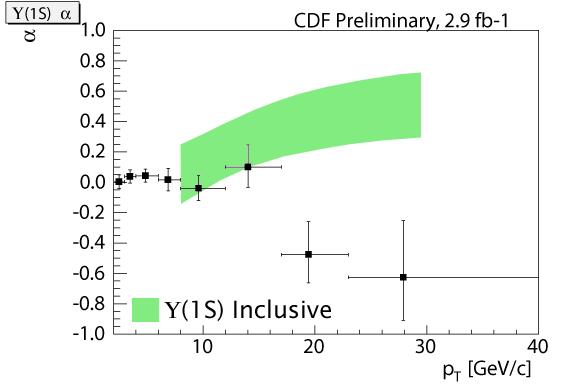Upsilon mesons are fancy subatomic particles composed of two b-quarks tightly orbiting each other. Three such states, of different mass, can be copiously produced by the Tevatron proton-antiproton collisions and efficiently detected by the CDF experiment when they decay. Here is how they look like, once their mass is reconstructed from the energy of the two muons they yield when they decay:

CDF used the decays of the (1S) resonance to measure its polarization -a quantity describing the angle between the direction of the particle motion and spin. The polarization is reduced to a number alpha variable between -1 and 1, which is shown in the vertical axis in the figure below, while the horizontal axis shows the transverse momentum of the produced particles. Also shown is the determination of the polarization obtained by the competitor of CDF, D0. The two results are utterly inconsistent!

What is even more interesting is that theoretical predictions (from a non-relativistic QCD model) disagree with both results: below you can see the comparison of CDF data with theory. From 8 to 17 GeV there is agreement with CDF and disagreement with D0, above 17 GeV the opposite occurs.

Ok, you can stop the clock. More than thirty seconds, huh ? Well, I took some liberty here, since I think these results are really interesting! For more information, please visit the web site of the CDF Y polarization analysis.




Comments